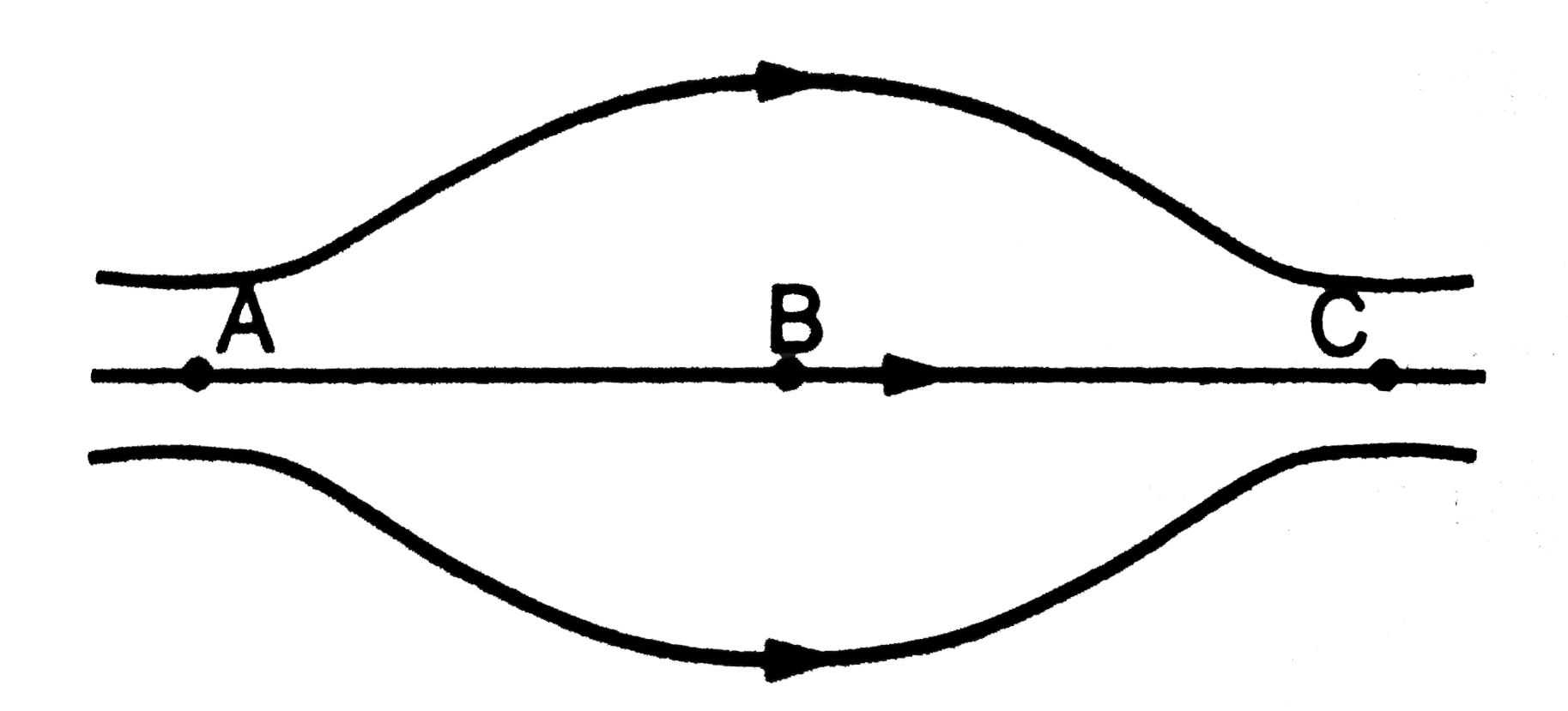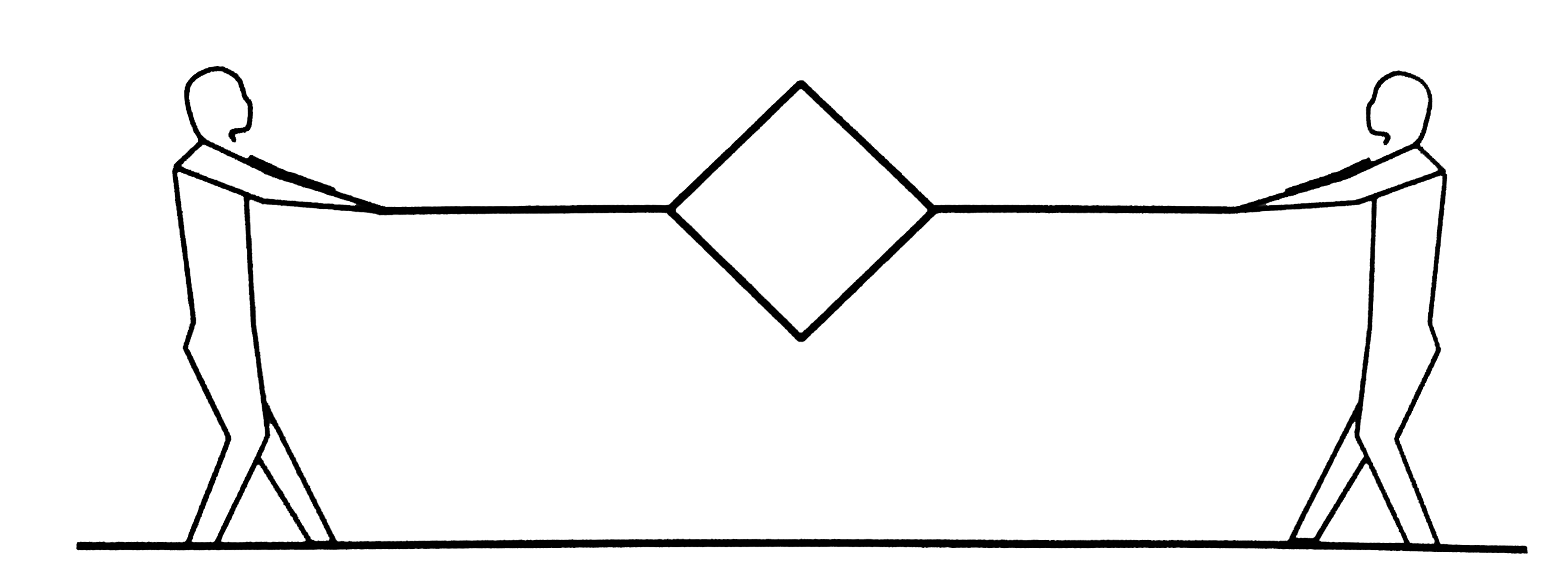Four particles each having a charge q, are placed on the four vertices of a regular pentagon. The distance of each corner from the centre is a. Find the electric field at the centre of the pentagon. Solution in Gujrati

Let the charges be placed at the vertices A,B,C and D
of the pentagon ABCDE. If we put a charge q at the
corner E also, the field at O will be zero by symmetry.
Thus, the field at the centre due to the charges at A, B,
C and D is equal and opposite to the field due to the
charge q at E alone.
The field at O due to the charge q at E is
q4πε0α2 along EO.
Thus the field at O due to the given system of charge
is q4πεon0α2 along OE.
Topper's Solved these Questions
- BOOK - HC VERMACHAPTER - ELECTRIC FIELD AND POTENTIALEXERCISE - Short Answer14videos
ELECTRIC FIELD AND POTENTIAL
- BOOK - HC VERMACHAPTER - ELECTRIC FIELD AND POTENTIALEXERCISE - Objective 19videos
ELECTRIC FIELD AND POTENTIAL
- BOOK - HC VERMACHAPTER - ELECTRIC FIELD AND POTENTIALEXERCISE - Exercises75videos
ELECTRIC FIELD AND POTENTIAL
- BOOK - HC VERMACHAPTER - ELECTRIC CURRENT THROUGH GASESEXERCISE - Exercises23videos
ELECTRIC CURRENT THROUGH GASES
- BOOK - HC VERMACHAPTER - ELECTROMAGNETIC INDUCTIONEXERCISE - EXERCISE9videos
ELECTROMAGNETIC INDUCTION
Similar Questions
The charge on a proton is +1.6X10(−19)C and that on an electron is −1.6X10(−19)C. Does it mean that the electron has a charge 3.2X10(−19)C less than the charge of a proton?
03:52View SolutionFigure shows some of the electric field lines correspoinding to an electric field. The figure suggests that
 03:39View Solution
03:39View SolutionFind the dimensional formula of ε0 .
View SolutionA discharge tube contains helium at a low pressure. A large potential difference is applied across the tube. Consider a helium atom that has just been ionized due to the detachment of an atomic electron. Find the ratio of the distance travelled by the free electron to that by the positive ion in a short time dt after the ionization.
06:21View SolutionShown a metallic square frame of edga a in a vertical plane. A uniform magnetic field B exists in the space in a directon perpendicular to the plane of the figure. Two boys pull the opposite corners of the square ot deform it into a rhombus. They start pulling the corners t t=0 and sisplace the corners at a uniform speed u. (a) find the induced emf in the frame at the instant when the angles at these corners reduce to 60∘. (b) find the induced current in the frame at this instatnt if the total resistance of the frame is R. (c) Find the total charge which flows through a side of the frame by the time the square is deformed into a straight line.
 03:42View Solution
03:42View SolutionFour particles each having a charge q are placed on the four vertices of a regular pentagon. The distance of each comer from !be centre is 'a'. Find the electric field at the centre of pentagon.
05:45View SolutionFive charges each q are placed at five corners regular pentagon. Distance from corner to the centre of pontagon is r . Then (K=(1)/(4pi epsilon_(0)))
06:19View SolutionAssertion : Five charges +q each are placed at five vertices of a regular pentagon. A sixth xharge −Q is placed at the centre of pentagon. Then, net electrostatic force on −Q is zero.
Reason : Net electrostatic potential at the centre is zero.08:00View SolutionFive charges , q each are placed at the corners of a regular pentagon of side. (a) (i) What will be the electric field at 0, the centre of the pentagon? (ii) What will be the electric field at 0 if the charge from one of the corners (say A) is removed? (iii). What will be the electric field at 0 if the pentagon is replaced by n-sided regular polygon with charge q at each of its corner?
03:44View SolutionFive equal charges each of value q are placed at the corners of a regular pentagon of side a. The electric field at the centre of the pentagon is
 04:25View Solution
04:25View SolutionA regular pentagon has four charges each +q at four of its vertices. At the centre of the pentagon, a charge +q is kept. If the distance of a vertex from the center is a the magnitude of the net force acting on the charge at the center is
08:24View SolutionThere is a pentagon ABCDE, whose centre is O. Five identical charges Q are placed at the corners of pentagon. (a)What will be the net electric field intensity at the centre of pentagon ? (b)If charge at corner A is moved to centre O of pentagon, then what will be the net force experienced by it ? Distance of any vertex of pentagon from its centre is d.
View SolutionFive charges, q each are placed at the corners of a regular pentagon of side a. (Refer the adjoining figure) (a) (i) What will be the electric field at O, if the centre of the pentagon? (ii) What will be the electric field at O if the charge from one of the corners (say A) is removed? (iii) What will be the electric field at O if the charge q at A is replaced by -q? (b) How would your answer to (a) be affected if pentagon is replaced by n-sided regular polygon with charge q at each of its corners?
02:40View SolutionFive charges, q each are placed at the corners of a regular pentagon of side 'a' as in figure:

(a) (i) What will be the electric field at O, the centre of the pentagon ?
(ii) What will be the electric field at O if the charge from one of the corners (say A) is removed ?
(iii) What will be the electric field at O if the charge q at A is replaced by -q ?
(b) How would your answer to (a) be affected if pentagon is replaced by n-sided regular polygon with charge q at each of its corners ?02:31View SolutionFour particles each having a charge q, are placed on the four vertices of a regular pentagon. The distance of each corner from the centre is a. Find the electric field at the centre of the pentagon.
04:20View SolutionFive equal charges each of value q are placed at the corners of a regular pentagon of side a. The electric field at the centre of the pentagon is
 02:47View Solution
02:47View Solution

